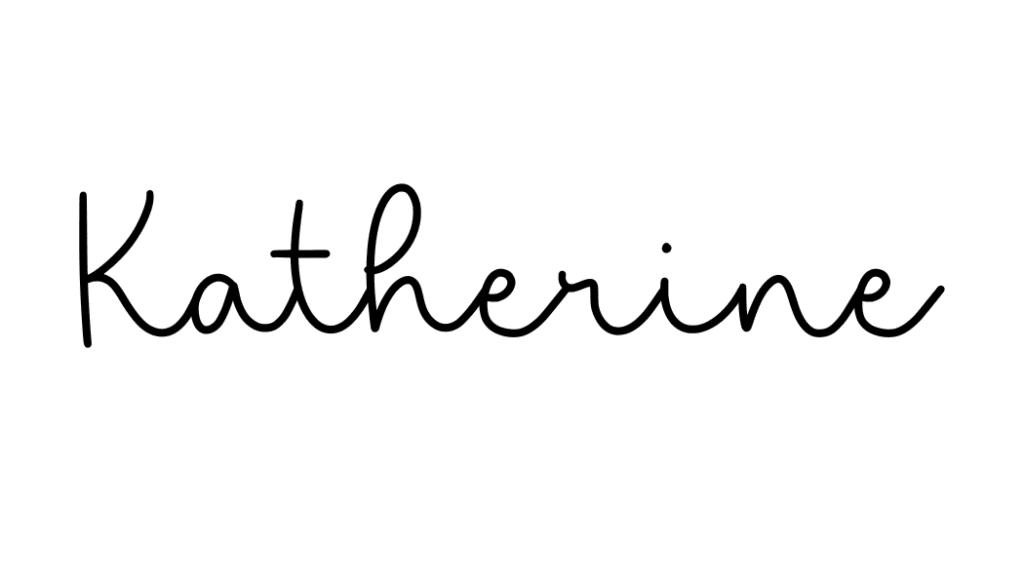
A Copywriter’s Guide to Overcoming Writer’s Block
Ever sit down to write something and just…can’t? You’re left staring at a blank screen, unable to put words on the page. A social media post, blog, email — sometimes, we’re not sure what to say or how to say it (despite being experts in our industry). If this sounds familiar, then you’ve struggled with writer’s block.
Writer’s block isn’t a new phenomenon. In fact, studies have shown that nearly 80% of people have grappled with it before. But if you’re wondering how to overcome writer’s block when it hits, you’re in the right spot.
If you’re new here, my name is Katherine, and I’m the founder of Written in the Mitten, a copywriting agency that helps business owners step up their marketing game with copy that convinces their ideal clients to sign on the dotted line. I write for a living and am no stranger to writer’s block. Though it will eventually pass, I’ve found several things to help speed up the process. Here are my best tips on how to overcome writer’s block.
Start with an outline
When you sit down to write a full-length blog, social media caption, or email, the task itself can be incredibly daunting. So instead of feeling like you need to write the entire thing all in one go, start with an outline. This step is essential to the pre-writing process and is something I do every day to avoid writer’s block.
For example, let’s say you’re launching a new program and need to write three promotional emails to sell it. You might wonder what to say in each email and how to start. And that’s where you can begin to outline.
Start with three basic topics:
- Email #1 — introduces the program and focuses on how it can take people from point A to point B
- Email #2 — a testimonial from someone who has been through the program, plus a special discount code
- Email #3 — a final reminder to join the program and snag the discount
Just like that, you’ve broken the process down and made it easier for you to start writing. Next, take those outlines and start piecing together your messaging. It might look like this:
- Email #1 — introduces the program and focuses on how it can bring people from point A to point B
- Name of the program, top features, top benefits
- Point A = confused, overwhelmed, stressed
- Point B = confident, motivated, inspired
- Email #2 — a testimonial from someone who has been through the program, plus a special discount code
- Testimonial from [Name]
- Discount = 10% off
- Email #3 — a final reminder to join the program and snag the discount
- Why they should join the program and what they’ll get out of it
- 10% off for only 24 more hours
Sometimes, breaking things down into small pieces is the easiest way to write something. Don’t just start with a full email, blog, etc. Instead, start with an outline that you can slowly expand upon. Before you know it, you’ll have a complete piece of copy!
Take a break
Though basic, this is truly one of the best tips I have. If you’re struggling to write, don’t write. Do something else. Take a break and come back later! Go for a walk, grab a snack, or watch your latest Netflix show. It doesn’t matter what it is — so long as it’s not writing.
Now, if you struggle to take breaks (hi to my fellow Type A’s 👋), try doing something that you’d still classify as productive: tidy up the kitchen, throw in a load of laundry, or finish your meal planning for the week. These tasks will help you clear your mind, reduce stress, and refresh your creativity.

Revamp your goal setting
You’ve got a website landing page you need to write by Thursday, and it’s currently Monday. If you want to welcome writer’s block into your space, you’ll write that landing page on its due date. But if you want to avoid writer’s block, you’ll revisit how you complete tasks like these.
Instead of trying to write something all in one day (or sitting!), aim to write small pieces of it each day. For example, on Monday, you start with your outline. Then on Tuesday, you work on your header and subheader. Wednesday, you can work on the bulk of the content. Then Thursday, you can run the page through Grammarly and fix any errors. You’re now left feeling confident in your work instead of scrambling to finish it.
Your goal goes from:
- Submit website landing page on Thursday
To:
- Outline website landing page on Monday
- Write website landing page header and subheader on Tuesday
- Finalize website landing page interior content on Wednesday
- Run website landing page through Grammarly and proofread on Thursday
Rethink the way you set goals so you can overcome feelings of overwhelm and kick writer’s block to the curb.
Get out of the office
A change of scenery might just be the one thing you need to beat writer’s block. The proof lies in this blog post, which I’m writing on a chair in my living room. Earlier today, I got tired of staring at my desktop screen and needed a change of pace. So I did some dishes, read my book, and whipped out my laptop to finish writing this piece.
If you’re used to writing in one location but feel stuck, go somewhere new. Though many entrepreneurs prefer local coffee shops, I love heading to my library (s/o Traverse Area District Library!). Often, it’s quieter, so you can focus easily. Plus, many libraries let you rent free rooms for a few hours, making it easy to hold meetings and work through your to-do list.

Don’t be afraid of AI
Tools like ChatGPT have been allll the rage lately — and though they shouldn’t take over your writing completely, they can be a tool to help you beat writer’s block. For example, let’s say you have to write a blog post on 10 different things to do in Madison, Wisconsin. Better yet, let’s add your audience and say you’re targeting seniors.
If you’re under 62, you might be scratching your head. Even if you live in Madison, you might not know what seniors would be interested in in your town. That’s where AI can help. Simply ask ChatGPT for a list of 10 things seniors can do in Madison, Wisconsin. Here’s what you’ll get:
“Madison, Wisconsin is a great place for seniors to live and visit. Here are 10 things seniors can do in Madison:
- Visit the Olbrich Botanical Gardens: This beautiful garden has a variety of gardens and trails for seniors to explore.
- Go to the Wisconsin Historical Museum: Learn about the history of Wisconsin and the people who have shaped the state.
- Take a walk on the Lakeshore Path: This scenic path offers stunning views of Lake Mendota and Lake Monona.
- Visit the Chazen Museum of Art: This museum has an impressive collection of art from around the world.
- Go to the Madison Farmers’ Market: This market has over 200 vendors and is a great place to get fresh produce and other goods.
- Attend a performance at the Overture Center for the Arts: This venue has a variety of performances, including music, dance, and theater.
- Visit the Henry Vilas Zoo: This free zoo has a variety of animals and is a great place to take grandkids.
- Take a tour of the Wisconsin State Capitol: Learn about the history and architecture of this beautiful building.
- Take a cruise on Lake Mendota: Enjoy the beautiful scenery of the lake while cruising on a boat.
- Attend a Badgers game: Cheer on the University of Wisconsin’s sports teams at a football, basketball, or hockey game.”
Just like that, the overwhelm is taken out of your writing. You can say goodbye to writer’s block and hello to outlines that make your writing process much easier!
Stop checking your phone
I know, I know — this one’s easier said than done. And honestly, if you’re like me, you might not even think you’re on your phone that much. The problem? Your screentime reports beg to differ. I myself didn’t realize how much time my devices were sucking from my schedule until I took a look. And if you haven’t yet, here’s how to check it out on an iPhone and Android.
Distractions like these can be a significant cause of writer’s block. If you find yourself easily distracted, try leaving your phone in another room and setting time limits on certain websites (I use this for Google Chrome!). Then, find a quiet spot to crank things out, and you’re less likely to fall victim to writer’s block.

Try different prompts
When I have no idea where to begin with a copywriting project (because, yes, writers deal with this often!), I love looking up prompts to help me out. For example, if I have to write 30 social media posts, I’ll simply Google something along the lines of: “one month of social media content ideas.” A quick search like this leads me to plenty of prompts and ideas that can lay the foundation for my writing.
Now, searching for a prompt is much different than plagiarizing — when you do this, simply look for inspiration, never stealing content itself from someone else. On this list of content ideas, I’ll take the overall topics (such as sharing a testimonial or highlighting a team member) and put my own spin on them. Prompts like these can help you generate ideas and get those creative juices flowing.
Work with a professional
At the end of the day, if writing isn’t your thing, that’s okay. It’s normal — especially for business owners who already wear many hats. However, should you constantly struggle with writer’s block, it might be time to hand over the reins. A professional copywriting team can help you save time, make more money, and feel confident in how you engage with your audience.
Learn more about our services here at Written in the Mitten, and be sure to send us a message with any questions you have!
